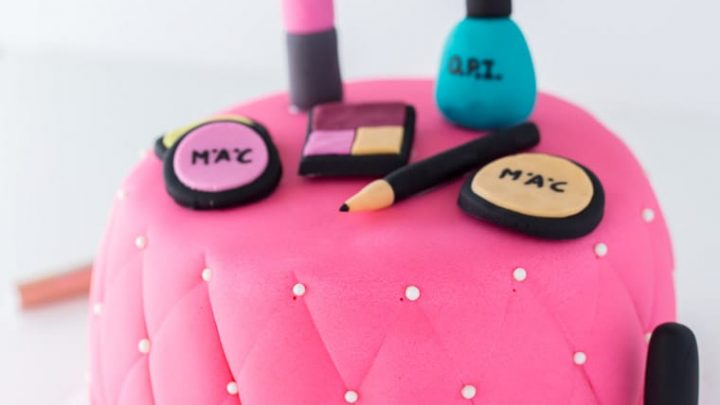Fondant cakes exploded into the scene and entered our collective ‘cake-consciousness’ when they were popularized by hit shows such as Ace of Cakes and Cake Boss. My Instagram feed is literally flooded with thousands of posts featuring intricate, flashy, and impressive designs that only fondant cakes can do. They make me want to grab them straight out of my phone screen and indulge my sweet tooth.
Luckily, I have been able to try fondant cakes at weddings and birthdays, and mind you, they are every inch as good as they look! Sometimes, I would bring home some leftover cakes from parties. This begs the question, how can I store fondant cakes so I can enjoy them at a later time?
Contents
How do you store fondant cakes?
Fondant cakes can be stored in a cake carrier at room temperature even for several days. Refrigeration is only really necessary if the cake has fillings like fresh fruits which usually have a low shelf-life. If you live in a hot and humid area, storing your fondant cake in a fridge may be necessary.

Are there different ways to store fondant cakes?
At room temperature, you should keep the fondant cake away from direct sunlight and artificial lighting. Different sources of light may change the color of the fondant or cause it to fade. If in an outdoor setting, consider using a corrugated cardboard box in place of the cake carrier as it will adequately block out the light.
If the fondant appears to be sweating at room temperature, use paper towels to remove moisture in order to prevent damage to the cake. You may place it in a cake carrier or wrap it in a bag to protect it from perspiring. The cake should be consumed in 3-4 days.
Since fondant is primarily made out of sugar, the chance of it melting is quite high. Although storing it at room temperature is sufficient most of the time, there are cases when you will need to refrigerate it. These include instances when the cake contains fresh fruits or if you live in a very humid and hot region.
In cases where refrigeration is needed, the cake should be wrapped or boxed in an airtight seal to ensure it doesn’t come in contact with the areas of the fridge where humidity is high. Even with the cool temperature inside a fridge, your fondant cake can still “sweat” or condense due to humidity.
Can you place fondant cakes in a freezer?
Yes, you may place fondant cakes in a freezer, especially if you don’t intend to eat the cake soon. The measures when storing fondant cake in the refrigerator also apply to storing it in a freezer. Due to the freezer’s very low temperature, immediately taking the fondant cake out may produce drastic changes on its structure. Before consuming it, it is best to transfer the cake to the refrigerator for a few hours to let it thaw and then have it rest to room temperature.
How does temperature affect the condition of the fondant cake?
Fondant cakes have different components which are affected by temperature differently. If the cake has fillings in it, delaying the application of fondant a day before serving it is best. Fondant seals moisture, allowing the cake to stay fresh.
To help maintain the fondant on a cake, it is best to work in an air-conditioned environment if you live in a humid and hot area. If it is not possible to do so, working in the cooler hours like early mornings or the late hours of the evening can help.
As fondant tends to melt as it condenses, it is best to chill the cake well before covering it with fondant. Having a nice, firm cake can do wonders when you start sculpting it with unique designs. After finishing with the decoration, do not put the cake back in the fridge right away. Leave it in a cool place until its temperature has settled.
How do you strengthen a fondant cake to prevent cracking?
Working with fondant is easier when you have knowledge of the basics. As a start, make sure to use high-quality scrapers, cake pans, turntables, and ingredients.
A cracked fondant is surely an annoying sight to bakers. This happens when fondant begins to dry out, which could be due to overworking or to being exposed to the elements. Using cornstarch or shortening in place of powdered sugar for dusting the surface will make the fondant dry out much less.
If small cracks exist in the fondant, try rubbing the surface in the opposite direction of the rifts. The heat from your fingers will make the fondant pliable enough to smoothen the surface over. You may even try disguising the imperfections with a bit of shortening. Square cakes are harder to cover up due to the sharp corners.
If you need to add moisture in a dry fondant before rolling or kneading, add glycerin or shortening.
How do you store slices of fondant cake?
Compared to a whole fondant cake, a sliced one is more vulnerable to drying because of its exposure to air. To prolong the cake for 1-2 more days, lay the slice on a plate face up and spread the frosting on the bare sides. The frosting effectively seals the cake so air won’t dry it out. There is no need to place more fondant on the exposed slice.
If frosting is not available or if you don’t want to apply more on the cake, place it in an airtight plastic wrap. Do not worry about the wrap sticking or damaging the fondant as the wrap can easily be peeled away.
If you have layers of wedding cake that you wish to consume for later, it is possible to freeze them for up to a year. Seal them with a tight plastic wrap and place in the freezer.
In conclusion, fondant cake is perfectly fine to be left at room temperature for several days. Refrigerating one may only be necessary if it gets very hot during the day, if it has perishable fillings, or if the cake won’t be served until after a few days. If refrigeration is needed, wrap the cake with cling wrap to protect it from drying out and absorbing unwanted fridge smells.







Leave a Reply